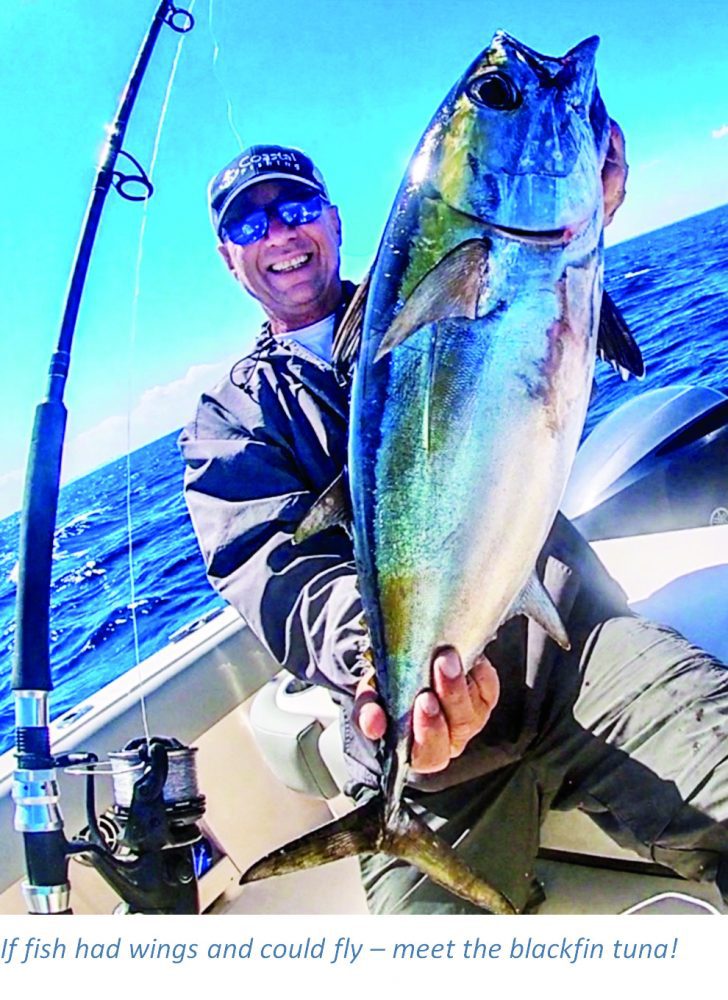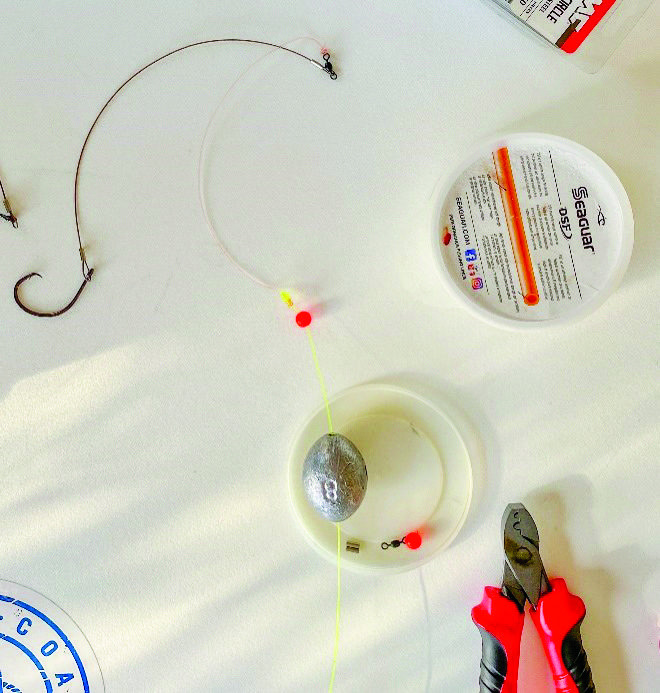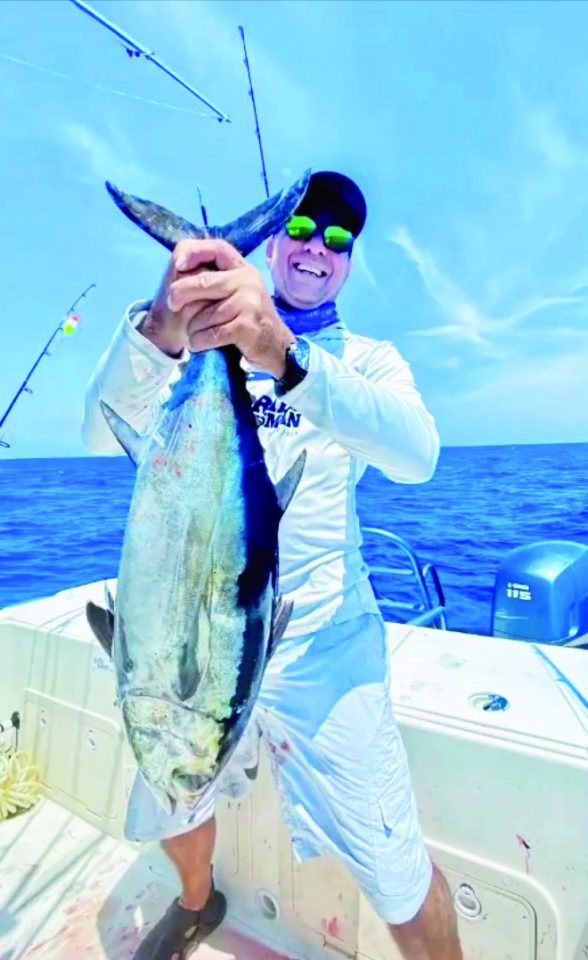By Mark Ambert Contributing Writer


April and May are the best months to target these fish as they speed their way up the southeast coastline. They will frequently target the deeper side of the ledges and reefs that frequent Florida’s coastline. Most can be found in 140’ to 280’ of water. I like the early morning hours as tuna can be both light and boat shy. During a full moon cycle the bite can turn off quickly as the fish have been feeding most of the night. These fish have a dark top with a bronze stripe and big eyes. They commonly range from 5 to 20 pounds with the occasional 30 pounder blowing up your bait! Live bait is best for bigger tuna. I prefer goggles or goggle eyes. Commonly used for sails, these can be caught or bought locally but can be expensive – they are well worth the effort to have on hand.

I like a medium class spinning outfit when targeting tuna with live baits.
My personal spinning outfit is a 7’6” custom rod designed specific for live bait fishing, particularly from a center console. This rod has the power to stop most anything that swims or you’re likely to encounter here off the northeast coastline.

These custom rods have an extended rear-grip as well as an extended foregrip which facilitates maneuvering big fish around the bow or stern of a boat. I’m collaborating with Coastal Fishing Company on a new series of rods called the Enthusiast Series™ that perfectly meets these requirements – stay tuned. The rod is in pre-production for a late summer release.
For a reel I use the Penn Spinfisher VI LL. This reel is spooled with 500 yards of 40lb PowerPro braid then topped off with 250 yards of 30lb Ande Monster Mono. I use a 6’ 50lb fluorocarbon leader tied to a 6/0 or 7/0 VMC circle hook. As an insurance policy against toothy critters, I sometimes use a 6” section of 45lb Surflon nylon coated leader in camo secured with a size 4 crimp to a VMC circle hook and a quality 150lb barrel swivel on the other end. Surflon is a soft coated wire material that doesn’t seem to put off leader shy fish like tuna.
Pro Tip – when targeting tuna, don’t be caught by surprise when a bull mahi, sailfish or even a toothy critter like wahoo or kingfish crash your bait. It’s that time of the year so be prepared! You don’t want to lose that fish of a lifetime not having enough line or stopping power, hence the bigger setup detailed here. I recently landed a 400lb blue marlin on a similar outfit which crashed the bait put out for tuna! Florida is notorious for spring surprises.
Once on my target area, I set up for the drift. I use a sea anchor to control both speed and direction. I put out three live baits to cover the water column in the following pattern. First bait out long – at least 150 to 200 yards and usually from the bow. You need to go long as tuna can sometimes be boat shy. The bait is rubber banded or hooked thru the upper lip and with no weight. You can use a float if needed to keep the bait closer to the surface as goggles tend to dive for the bottom.
Second bait is in the middle and with just enough weight to get down to the level where you are marking fish or bait balls. If no bait or fish are present, I usually drop between 45’ and 65’ down as tuna will get progressively light shy as the day progresses. I use a barrel weight secured above the leader and swivel (see picture). Use a plastic bead to prevent chafing against the knot.
You want to have the middle bait always weighted to prevent the baits from seeing each other and swimming together.
The third line goes out from the stern and is also unweighted and free swimming. Deploy this one half the distance of the bow bait – say 75 to 100 yards. Keep a close eye on all baits and keep the lines from crossing. Tangled baits don’t catch fish!
Pro Tip – I always keep a spin rod deployed next to the parachute / sea anchor with a squid or frozen sardine. Oftentimes a school of mahi will come in to investigate the chute and pick up the bait!
Nothing tastes better than fresh caught BFT. Catching these speedsters will quickly become an addiction and now is the time to get on the water and make it happen here in Florida!
Mark Ambert – Avid outdoorsman, sportswriter & photographer
Coastal Fishing Company www.coastalfishing.com
Follow me on Instagram @marksgonefishing or contact me at marksgonefishing@gmail.com for collaboration
